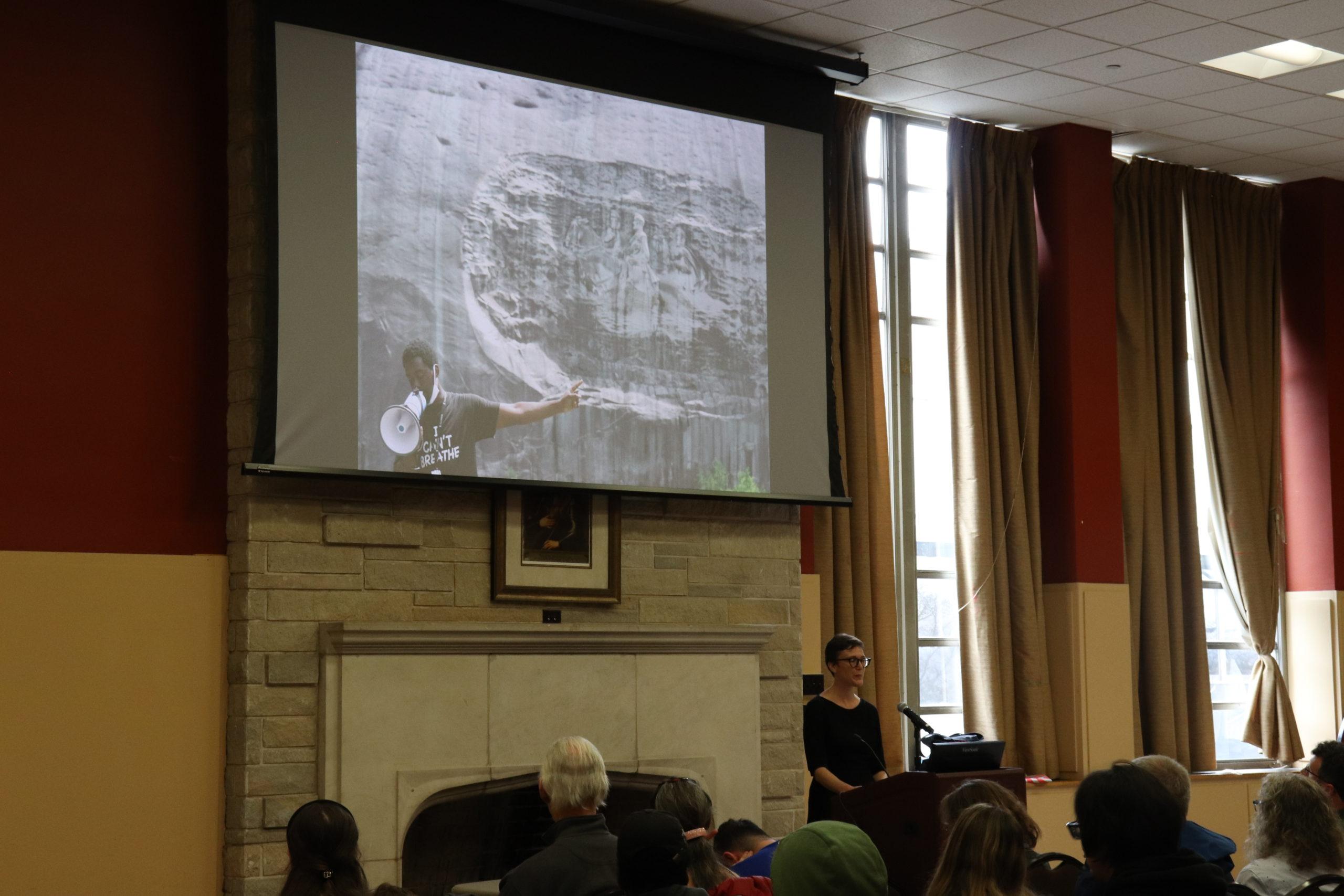Erin L. Thompson, Ph.D., art historian, lawyer and the only professor of art crime in the U.S., spoke at the annual department of history’s Francis X. Gerrity Lecture in the North Lounge in Campion Student Center on March 24.
Thompson’s lecture titled “The Role of History in Monumental Debates: The Case of Stone Mountain” is related to her book, “Smashing Statues: The Rise and Fall of America’s Public Monuments,” in which she discusses the historical context of controversial monuments in the U.S.
Thompson, associate professor at the John Jay College of Criminal Justice in the City University of New York, said it is important to have a skeptical attitude when looking at what monuments represent.
“The art world is a way to shape who we are as a nation, and to have discussions about grand abstract questions like racial equity in the form of physical things,” Thompson said.
Thompson’s lecture focused primarily on the largest Confederate monument in the U.S., which is carved into Stone Mountain in Atlanta, Georgia.
“[Stone Mountain] shows what I’m trying to do with the book which is, dig into the history of a particular monument as a monument, so not just who it honors but why was this thing built in this form?” Thompson said.
The United Daughters of the Confederacy commissioned the carving on Stone Mountain in 1915. Sculptor Gutzon Borglum’s original proposal for the monument included carving over 700 figures into the side of the mountain. According to research by Thompson, Borglum took most of the money he was given for the project to fund his lavish lifestyle and to pay off his personal debts. He was subsequently fired, which then created delays in the construction of the monument.
In 1963, sculptor Walker Hancock was selected to continue the project based on his altered design. The carving was completed by Roy Faulkner in 1972, nearly 60 years after it was first commissioned.
Thompson said museums, monuments and art have a reputation for being neutral, but they may not represent everyone.
“Most American monuments went up as the product of a very small group of people,” Thompson said. “So often, it’s not really what is best for everyone [that] is being encouraged, it’s what’s best for the people who are paying for that monument or who have enough power to put it in a public space.”
In 2020, nearly 100 Confederate statues across the country were removed in the wake of the nationwide protests after Minneapolis police killed George Floyd. According to the Southern Poverty Law Center, an estimated 700 Confederate monuments remain standing.
Melissa Chakars, Ph.D., associate professor and chair of the department of history, said all Americans share the complicated history of the U.S. and must think about how shared history functions as one of the markers of identity.
“Monuments give us a place to stop for a moment and discuss, what kind of monument do we want to have? What pieces of our history do we want to remember?” Chakars said. “Do we want to remember that Confederate leaders broke away and tried to form their own state?”
Katherine Sibley, Ph.D., professor of history and director of American Studies, said Thompson’s lecture relates directly to the importance of students’ awareness of public history.
“It’s all about how the public interacts directly with history, because most of the public probably isn’t always reading history books,” Sibley said. “But they might go to a museum or they might see a monument, and be more likely to notice or wrestle with what’s around them.”
Leah Ramge ’22, who attended the lecture, said she will now look at what went into building the monuments displayed in public spaces.
“I feel like after listening to this [lecture], I realized that anytime you see a statue, you shouldn’t just read the sign attached to it,” Ramge said. “You need to dig deeper and find the context about who made it? Who funded it? Why did they do it? And where is it? Because I feel like I always just walk past things and don’t understand the meaning behind it.”
Thompson said thinking about a particular monument is really opening up a discussion about what the U.S. should be as a country and community.
“It’s really the conversations in the community that I want to encourage,” Thompson said. “To me, maybe monuments should stay, maybe it should go, maybe it should be changed, maybe it’s fine like it is. The important thing is that we all talk about it and decide, does it actually reflect what we want the values of our community to be?”













































